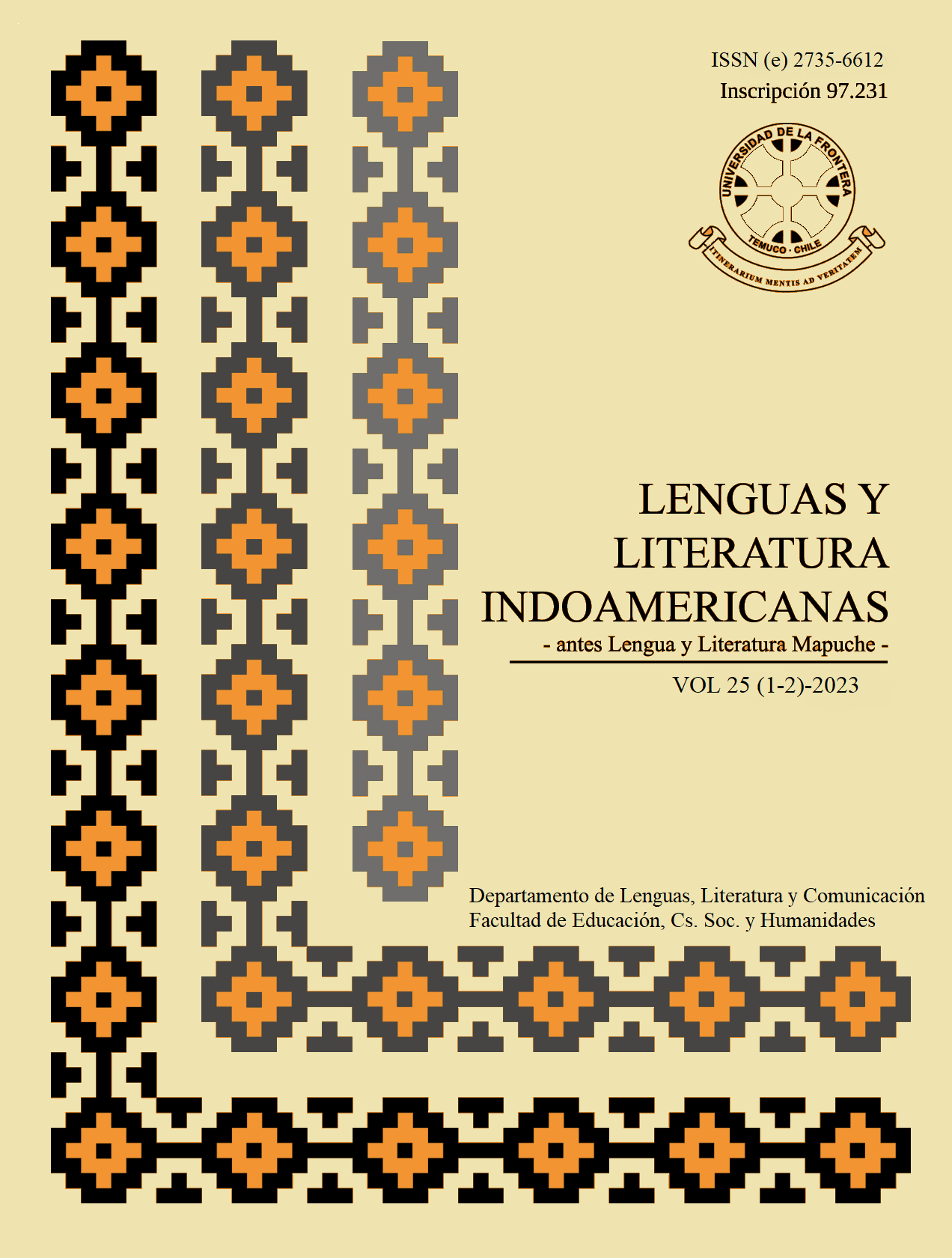Funciones de la partícula ca en cuatro peticiones escritas en lengua purépecha durante la colonia, en México: una aproximación descriptiva desde la lingüística del corpus
Keywords:
lengua purhépecha, conjunción ca, documentos administrativos, peticionesAbstract
En el presente artículo se expone un acercamiento a las funciones de la partícula conjuntiva ca en cuatro peticiones escritas en lengua purhépecha durante la época colonial en México. El corpus suma un total de 1206 palabras de textos jurídico-administrativos; uno escrito en el siglo XVI y tres en el siglo XVII. La metodología de análisis contempla cuatro pasos: a) búsqueda y selección de documentos; b) transcripción; c) análisis mediante el programa AntConc para identificar las construcciones prototípicas y atípicas de la partícula ca; d) conteo de las funciones de coordinación nominal y verbal, y función discursiva. Los resultados reflejan que las funciones de ca tienden a ser predominantemente discursivas; mientras que la función de coordinante nominal y verbal es menor. La conclusión no es determinante puesto que el corpus es muy pequeño; cuatro documentos de un sólo tipo textual. Un estudio con una cantidad mayor de documentos y una tipología textual variada, podría reafirmar esta tendencia o, por el contrario, proyectar resultados diferentes. Este primer acercamiento apunta a que la función discursiva de ca se debe a que los textos escritos en esta época contienen la estructura típica de los textos europeos de naturaleza administrativa: protocolo al principio del texto; invocación, intitulación, dirección y saludo; cuerpo del texto: expone el objetivo del texto; y escatacolo: data y validación. Sin embargo, específicamente, el cuerpo o centro del documento es producto del dictado, en razón de ello, los manuscritos contienen rasgos de oralidad.
Functions of the particle ca in four petitions written in the Purépecha language during the colonial period in Mexico: a descriptive approach from corpus linguistics.
Abstract
This paper presents an approach to the functions of the conjunctive particle ca in four petitions written in the Purhépecha language during the colonial period in Mexico. The corpus totals 1206 words from juridical-administrative texts; one written in the sixteenth century and three in the seventeenth century. The analysis methodology includes four steps: a) search and selection of documents; b) transcription; c) analysis using the AntConc program to identify prototypical and atypical constructions of the particle ca; d) counting of nominal and verbal coordination functions, and discursive function. The results reflect that the ca functions tend to be predominantly discursive; while the nominal and verbal coordinating function is lower. The conclusion is not decisive since the corpus is very small; four documents of a single textual type. A study with a larger number of documents and a varied textual typology may reaffirm this tendency or, on the contrary, project different results. This first approach suggests that the discursive function of ca is due to the fact that the texts written at this time contain the typical structure of European texts of an administrative nature: protocol at the beginning of the text; invocation, intitulation, address and salutation; body of the text: exposes the objective of the text; and escatacolo: data and validation. But, specifically, the body or center of the document is the product of dictation, and therefore, the manuscripts contain features of orality.
Keywords: purhépecha language, ca conjunction, administrative documents, petitions.
Downloads
Published
How to Cite
Issue
Section
License

This work is licensed under a Creative Commons Attribution 4.0 International License.
Los autores/as conservan los derechos de autor y ceden a la revista el derecho de la primera publicación. La publicación se registra con la licencia de atribución/reconocimiento de Creative Commons, que permite a terceros utilizar lo publicado siempre que mencionen la autoría del trabajo y la primera publicación en esta revista.







